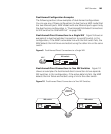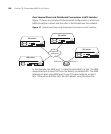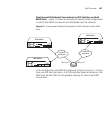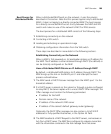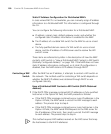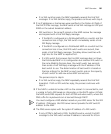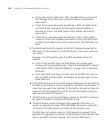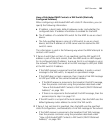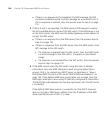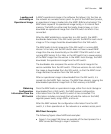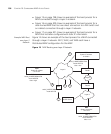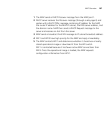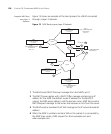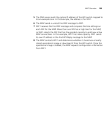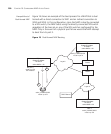MAP Overview 193
How a Distributed MAP Contacts a WX Switch (Statically
Configured Address)
When configuring a distributed MAP with static IP information, you can
specify the following information:
a IP address, subnet mask, default gateway router, and whether the
configured static IP address information is enabled for the MAP.
b The IP address of a suitable WX switch for the MAP to use as a boot
device.
c The fully qualified domain name of a WX switch to use as a boot
device, and the IP address of a DNS server used to resolve the WX
switch’s name.
This information is used in the following way when the MAP attempts to
contact a WX switch:
1 If Items A and B (but not Item C) are specified, and the WX switch’s IP
address is part of the local subnet, then the AMP sends an ARP request
for its configured static IP address, to ensure that it is not already in use in
the network. The MAP then sends a Find WX message to UDP port 5000
at the WX switch’s IP address.
If the MAP receives a response from that address, it sends a unicast
message to the WX switch, to request an operational image.
If the MAP does not get a response, then it sends a Find WX message
to UDP port 5000 on the subnet broadcast address.
If the MAP receives a response to the broadcast Find WX message,
then the process continues using the procedure described under
“How a Distributed MAP Contacts a WX Switch (DHCP-Obtained
Address)” on page 190.
If there is no response to the broadcast Find WX message, then the
process skips to step 4 on page 191.
If the WX switch is not part of the local subnet, then the MAP uses the
default gateway router address to contact the WX switch.
2 If Item A, but not Item B is specified, then the MAP uses the specified
static IP configuration, and broadcasts a Find WX message to the subnet.
If the MAP receives a response to the broadcast Find WX message,
then the process continues using the procedure described under
“How a Distributed MAP Contacts a WX Switch (DHCP-Obtained
Address)” on page 190.



